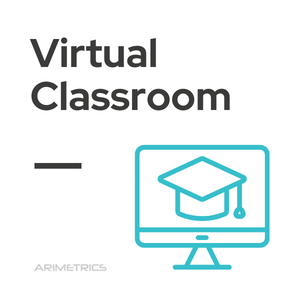
Definition:
A virtual classroom is an online educational environment that allows students and teachers to interact in real time from different places. Virtual classrooms simulate the traditional configuration of a classroom and allow group learning, lectures and discussions with multimedia tools such as audio/video conferencing and real-time chat .
Characteristics of a Virtual Classroom
Virtual classrooms typically include a number of features that make teaching and learning more effective. Some of these features are:
- Virtual whiteboards where teachers can post notes, comments and documents;
- Online chat rooms for real-time discussions between students and instructors;
- Virtual rooms for groups where teachers can carry out activities and group discussions;
- Virtual classrooms for collaborative projects in small groups;
- Virtual test centers where students can take assessments and quizzes;
- Virtual classrooms to teach classes with audio and video transmission capability.
Differences between a Virtual Classroom and a traditional classroom
A virtual classroom is very different from a traditional classroom. Virtual classrooms enable asynchronous learning, meaning students can access course materials, lesson recordings, and activities at any time, unlike traditional classrooms, which require attendance and participation at specific times.
In a virtual classroom, teachers can provide individualized instruction and feedback through discussion and chat rooms, as well as support to students who may struggle to understand the material. Virtual classrooms also allow for greater interaction between students and teachers than traditional classrooms.
Advantages of virtual classrooms
Virtual classrooms offer a number of advantages to both students and teachers. They give students the flexibility to learn at their own pace and from anywhere, as long as they have an internet connection. Virtual classrooms also offer teachers the ability to easily monitor student progress and give them individualized instruction and feedback. They are also more cost-effective than traditional ones, since they do not need physical space or equipment.
Overall, virtual classrooms can provide a valuable learning experience for both teachers and students. They can be used as a complement to traditional teaching methods, or even replace them altogether. Its characteristics make teaching and learning more effective, efficient and enjoyable. With the right technology and pedagogical strategies, virtual classrooms can provide an engaging learning environment for all participants.
Disadvantages of virtual classrooms
Although virtual classrooms offer advantages for students and teachers, they also present some potential drawbacks .
Virtual classrooms can be difficult for students who are not comfortable with technology or have difficulty concentrating in an online environment. They may also lack the social interaction present in traditional classrooms, which can make it difficult for students to stay motivated and engaged.
However, these issues can be solved by providing support and guidance to ensure that all participants feel comfortable using virtual classroom tools. With the right training and support, virtual classrooms can provide an engaging learning experience for all participants.
